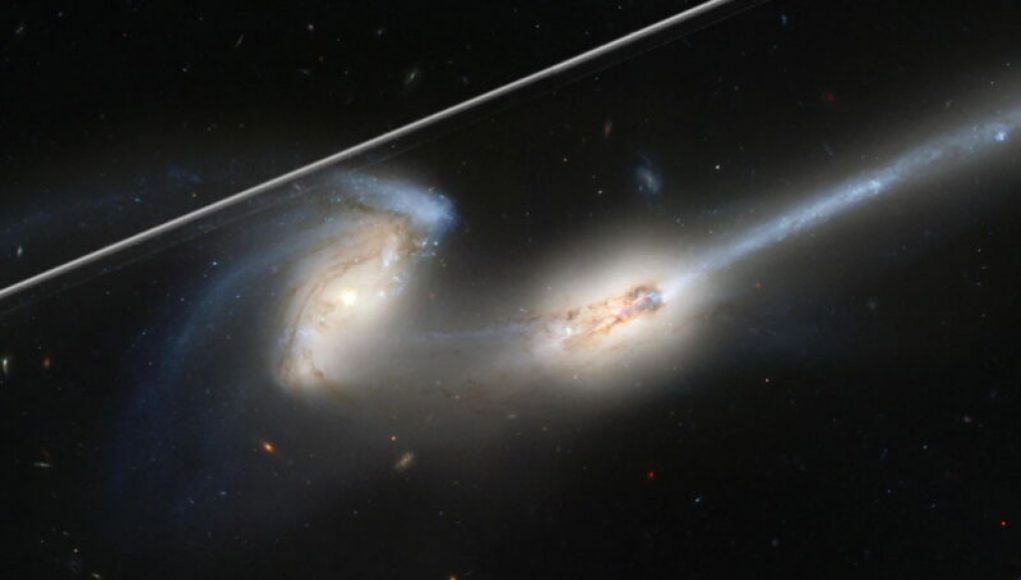The night sky is under threat from swarms of satellites, leaving scratch marks on space photos and hindering scientists’ work. These satellites reflect sunlight and mimic astronomical objects, making it difficult for astronomers to distinguish between the two. David Stark, an astronomer at the Space Telescope Science Institute, has revealed that the rate of satellite trails is doubling, but his team has developed new software that can detect and mask out these trails. The software, called Median Radon Transform, examines every linear path across an image at every possible angle, allowing astronomers to ignore affected pixels in their analysis of the data. However, this fix is limited to the Hubble Space Telescope, which is orbiting 332 miles above the Earth. Ground-based optical telescopes with wide-field imaging are far more affected and stand to lose valuable data.
For years, astronomers have been utilizing satellites to capture breathtaking images of the stars, often capturing our galaxy and its infinite mysteries as we know them today. However, astronomers have recently noticed an unexpected problem that has come along with space photography: satellites photobombing up close and personal images of space.
These satellites, which are undoubtedly a sign of modern progress, have been unintentionally intruding on pictures of celestial bodies due to their constant orbit. The many satellites of the world being captured in photos taken by these space telescopes, such as the Hubble, the Chandra, and the Spitzer, are swiftly photobombing the images that the scientific community highly relies on to gain insights into the universe and to learn more about its depths.
In order to lessen the unwanted images of these satellites, astronomers have been looking into multiple solutions, such as changing the time of day at which the telescopes take pictures, as the satellites will show up differently depending on the time and days of the week.
Additionally, the hubble telescope itself is equipped with tools that help edit and reduce the visibility of the satellites before it is released in its official images, as the features of the telescope such as its filters can reduce the amount of light of the satellites in comparison to the stars that it is observing.
Overall, the photobombing of satellites in space images is a current problem that astronomers seek to solve in order to get back up close and personal images of the stars that the scientific world is so eager to get. With practice and proper implementation, astronomers are sure to eventually perfect and create solutions that will bring them the best of our universe’s heavenly beauty as efficiently as possible.




















